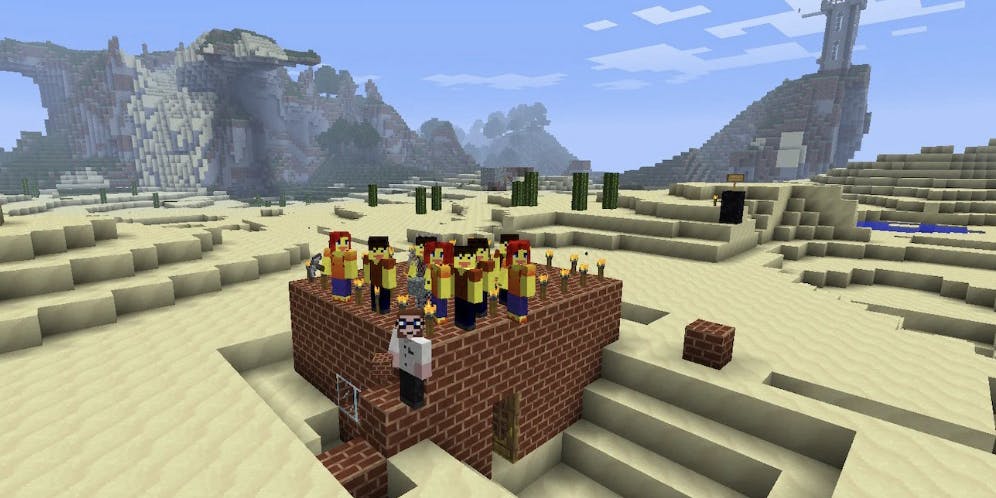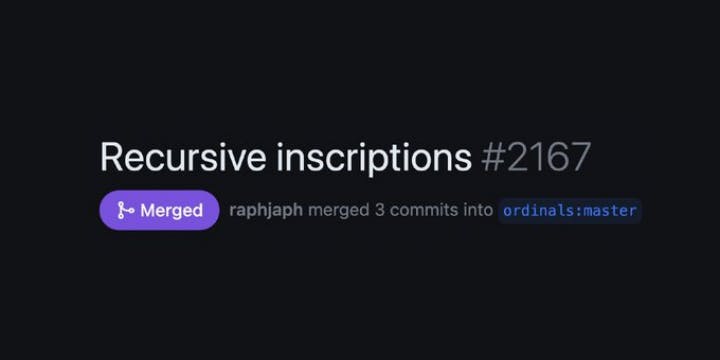
Detailed Explanation of Airdrop Strategy and Recommended 6 Recent Airdrop Opportunities
Airdrop is a popular method for web3 projects to distribute tokens and promote their platforms, especially commonly used by startups. Airdrop is also one of the most popular marketing strategies, allowing users to be the first to know and engage with the latest and highest-quality projects, while also gaining economic benefits. In this article, veDAO will analyze airdrops in depth, including its definition, history, process, and classification, and provide safe participation experiences and precautions for airdrops. Finally, veDAO recommends 6 recent airdrop opportunities worth participating in.
1. Airdrop Definition
Airdrop is a behavior in the blockchain field that involves sending free encrypted tokens to specific digital wallet addresses. It is a way for project parties to give away encrypted assets to users. For project parties, airdrop is a marketing strategy aimed at promoting new projects and their encrypted tokens, increasing awareness of the project, and promoting adoption. For users, airdrop tokens are sent for free, but sometimes specific tasks may be required to be completed. By participating in airdrops, users can gain economic benefits. Airdrops are not limited to new encrypted projects; mature web3 projects can also use this strategy to improve the distribution of tokens and reward loyal community members.

2. Airdrop History
Airdrop has been a long-standing culture in the cryptocurrency industry. The earliest cryptocurrency airdrop occurred in June 2010, when software engineer Gavin Andresen, who co-developed the Bitcoin system with Satoshi Nakamoto, set up a website called Free Bitcoins. Users could receive 5 bitcoins for free by posting their bitcoin receiving address on the website. The value at that time was only 1 cent (about 0.3 Taiwanese dollars). Airdrop truly became an important operating method for project parties, generally believed to have started in 2014. To understand the essence of airdrop, it is necessary to have a clear understanding of its evolutionary history.

-
2014: The first airdrop was initiated by a project called "Auroracoin." It distributed free tokens to all citizens of Iceland as a strategy to promote the adoption of new encrypted tokens. However, the project and tokens ended in failure. At this time, airdrops did not have any interaction or other requirements; confirmation as a community member was sufficient.
-
2017: With the ICO boom, airdrops became increasingly popular, and many web3 new projects began using airdrops as a way to attract potential investors and users. Electroneum was one of the successful projects during this period, airdropping over 5000 tokens to users for free, which was very successful, with over 120,000 users downloading the application and creating accounts in the first two weeks.
-
2018-2019: Airdrops became more complex and targeted, with projects using them to reward early adopters, community members, and loyal users. Steemit was one of the major projects that built a strong community through airdrops, distributing tokens called "Steem" to users based on their level of participation on the platform.
-
2020: The rise of DeFi brought a new form of airdrop, where web3 projects distributed tokens to liquidity providers or users participating in liquidity mining activities. The famous Dex project Uniswap conducted the UNI airdrop in September 2020. This was one of the largest and most well-known airdrops in crypto history, and it spawned numerous imitators.
-
In 2020, airdrops began to be used as a fair and transparent way to distribute tokens, rewarding users based on their previous interactions or other levels of participation through mechanisms such as "snapshot" airdrops. DeFi project 1INCH was one of the earliest projects to attempt fair distribution of tokens using snapshot airdrops.
-
2021: Regulatory policies around airdrops began to become clearer, with some jurisdictions requiring airdrops to be registered as securities offerings.
-
2022: More and more projects are choosing airdrops. Apecoin airdrop to its NFT holders by BAYC, the OP token airdrop by the Optimism project, and the airdrop to early adopters by Apto are influential airdrop activities in this year. In 2022, the requirements for airdrops have become higher, with witch hunts being conducted for screening, and airdrops becoming multidimensional, requiring multiple conditions to be met.
-
2023: Airdrops are now an important part of the crypto market. This year, airdrop projects and frequencies have experienced significant growth. The Arbitrum airdrop, which received over 42 million ARB within the first hour, is the most sensational airdrop of the year.
-
Summary: Airdrops have been continuously evolving and iterating, and have become an important part of the crypto market. Based on the difficulty of participating in airdrops, airdrops in history can be divided into the following stages: confirmation as a community member, simple registration or 0 transfer, simple interaction, witch hunts for screening, and heavy user participation, multidimensional conditions for airdrop participation.
3. Airdrop Process

As a marketing tool, each specific project will choose different types of encrypted airdrops according to their specific needs, and the working mode of each type of airdrop is also different. The general airdrop process can be divided into:
-
The team behind the project decides the amount of tokens to be airdropped to users. The next step is to select the target audience and platform they will use to distribute the tokens, while also setting eligibility requirements for users to receive airdrop tokens.
-
Users select a high-quality web3 project they are interested in from the ongoing airdrop projects.
-
Generally, airdrops require users to meet specific requirements to be eligible for free tokens. These requirements may include following the project on social media, sharing posts, joining Discord/Telegram groups, filling out surveys, and interacting with project tasks. Some projects require users to complete KYC verification to participate, while others only require registration. Airdrop requirements vary depending on the project's preferences, with the main purpose being to gain as much publicity and adoption for the project or new tokens as possible.
-
After meeting the requirements, users submit detailed information to register for the airdrop.
-
After registration is completed, users need to wait for the distribution of tokens.
-
Projects generally execute airdrops through smart contracts, and tokens are automatically distributed to user wallets.
-
After the tokens are distributed, users will receive them in their wallets. After receiving the tokens, users can choose to continue holding the tokens or trade them on crypto exchanges.
4. Airdrop Types
Each type of airdrop has unique characteristics and purposes, and it is necessary to understand different types of cryptocurrency airdrops. The following are popular cryptocurrency airdrop types.
Holder Airdrop
Holder airdrops distribute tokens for free to people who hold a certain amount of digital currency in their wallets. Project teams usually take a snapshot of users' cryptocurrency holdings at a specific date and time. If the wallet balance meets the minimum requirement, the recipient will receive tokens for free based on the holding amount at the time of the snapshot.
Many new projects airdrop tokens to wallets holding Bitcoin (BTC), Ethereum (ETH), or other successful tokens in the field, as they have the largest communities in the field.
Standard Airdrop
The most primitive airdrop method, where users only need to register relevant wallets or contracts to receive free airdrops. No other information is required. Airdrops are quick and easy, but project developers set limits on the amount of tokens each user can receive. They follow a first-come, first-served principle.
Bounty Airdrop
Bounty airdrops generally require users to participate in promotional activities announced in advance to qualify for the airdrop. Bounty airdrops require users to complete certain tasks, such as sharing related project posts on Twitter, joining the project's official Telegram, or creating posts on Instagram and tagging several friends. To receive the bounty airdrop, users need to fill out a form containing wallet address information and provide proof of completing the tasks.
Exclusive Airdrop
Exclusive airdrops are limited to sending encrypted currency to specified wallets. Generally, airdrop token recipients have had contact with the project, either as active community members or early supporters of the project. These airdrops are often used as a way to reward loyal users and build a strong community around the project. In September 2020, the decentralized exchange platform (DEX) Uniswap airdropped 400 UNI to all wallets that had interacted with the platform protocol before a specific date. Users holding governance tokens will have the right to vote on future decisions related to the project's development.
Faucet Airdrop
Faucet airdrops distribute small amounts of tokens to participants regularly (usually daily or weekly). These airdrops are usually of small value and are intended to encourage regular interaction with the project.
Hard Fork Airdrop
This is a bit different. When a coin hard forks from its original blockchain, a new token is created, and people holding the original tokens will receive an equal amount of the new tokens in their wallets. The most famous example is the Bitcoin Cash (BCH) hard fork that occurred in 2017: Bitcoin holders automatically received an equal amount of BCH.
Summary
Cryptocurrency airdrops can be simply divided into two categories based on the timing of eligibility announcements: pre-announcement and post-confirmation types. Bounty airdrops and faucet airdrops are mostly pre-announcement types, while other types of airdrops are mostly post-confirmation types, but can also be pre-announcement types. Project parties will choose the type of cryptocurrency airdrop to be executed based on their motivations and customer acquisition plans.
5. Experiences and Precautions
When participating in cryptocurrency airdrop activities, the following points are some experiences and precautions summarized by veDAO, which users can refer to when participating in airdrop activities:
-
Do Research: Before choosing to participate in airdrop activities, conduct thorough research on the selected project and its team.
-
Do Not Treat Airdrops as Investments: It is recommended to consider airdrops as bonuses rather than a primary investment strategy.
-
Use Separate Email Addresses and Wallet Addresses: It can help protect personal information from being shared.
-
Pay Close Attention to Projects: Airdrops usually have time limits, and users need to complete tasks or submit wallet addresses within the specified time. Missing the deadline will result in not receiving tokens. Keeping up with the latest developments and information about the project can also help users avoid potential scams.
-
Please Be Patient: Airdrop distribution may take time and may be delayed due to various factors.
-
Beware of Scams: Airdrop scams are common, and users should not participate in airdrop activities of unreliable projects or disclose their private keys or personal information. The recent phishing scam of myEtherWallet, where scammers created a fake website and promoted a fake airdrop, requiring users to enter their private keys to receive tokens, had a significant impact.
Special Airdrop Tools:
http://dropsearn.com/airdrops/
6. Recommended Airdrop Opportunities
After extensive screening and research, veDAO has compiled the following potential projects worth participating in for 6 recent or upcoming airdrops.
LayerZero
LayerZero (ZRO) is an interoperability protocol that provides true and guaranteed message delivery through configurable trustless means. It currently operates on most major blockchains, including Ethereum, Avalanche, Polygon, BNB Chain, Aptos, Fantom, Arbitrum, and Optimism. LayerZero has not yet launched its token, but the team mentioned the ZRO token in their documentation. However, it is expected that the project will airdrop tokens to their dApp users.
Here are some suggested ways to participate in any potential airdrop:
-
Stake STG and vote on Stargate Finance
-
Use the Stargate, USDC, Aptos, and LiquidSwap bridges
-
Cross-chain swap using SushiSwap
-
Use the Bitcoin bridge
-
Interact with other dApps on LayerZero
It is important to note that the LayerZero team has not made an official announcement about the airdrop. Therefore, any suggested participation methods are speculative.
zkSync
zkSync is a ZK Rollup that provides scalable and low-cost transactions on the Ethereum blockchain. This is achieved by submitting validity proofs along with bundled transactions to Ethereum smart contracts. The zkSync Era Mainnet Alpha is now open to the public. The team has indicated that they will launch a native token in the future, which gives hope for potential airdrops. To qualify for a zkSync airdrop, it is speculated that users should:
-
Add zkSync Era Alpha Mainnet to MetaMask
-
Interact with zkSync Lite and zkSync Era Mainnet Alpha
-
Complete tasks on zkSync's Crew3
-
Interact with the zkSync ecosystem, such as Orbiter Finance or ZigZag.
It is worth noting that because some zkSync dApps may not have launched their tokens yet, you have the opportunity to receive double airdrops.
StarkNet
StarkNet is a decentralized Validity-Rollup (or "ZK-Rollup") running on Ethereum, providing unlimited computational capacity for decentralized applications without sacrificing security or compatibility. It uses secure and scalable cryptographic proof system STARK to ensure transaction security. StarkNet is permissionless, meaning anyone can use it without third-party approval. StarkNet's alpha v0.11.0 has just launched on Testnet, and a mainnet upgrade is expected to follow soon.
The best way to potentially receive a StarkNet STRK token airdrop is to interact with their testnet. Additionally, some protocols on StarkNet may not have tokens yet. Therefore, using their dApps can also earn you their airdrop, providing you with double rewards.
Polygon zkEVM
Polygon zkEVM (MATIC) is a layer 2 scaling solution for Ethereum that provides scalability and low fees using zero-knowledge proofs while maintaining Ethereum compatibility. Polygon's co-founder Sandeep Nailwal strongly hinted on Twitter that there will be a huge MATIC airdrop for zkEVM users. The best way to potentially receive the airdrop is to interact with Polygon zkEVM mainnet. To do this, add Polygon zkEVM to MetaMask. Then, connect to Polygon zkEVM through a local bridge or a third-party bridge (such as Orbiter Finance). Finally, interact with QuickSwap, which is currently the only active dApp deployed on Polygon zkEVM.
Vela Exchange Airdrop
Vela Exchange is a decentralized perpetual contract platform designed to improve the speed and security of DeFi derivatives by using a hybrid model of off-chain order books and on-chain settlement. According to official documentation, Vela users can maximize their trading volume to maximize their airdrop. Additionally, participating in their flash trading competition not only gives you a chance to win their prizes but also provides you with more airdrop tokens. The first competition ended with a prize pool of $10,000 USDC and $2,000 eVELA. Vela will host a second flash trading competition, which will be adjusted to support traders of various scales. However, the main event will be their Grand Beta trading competition, where Vela promises to provide big prizes.
Blur NFT Marketplace
The first season airdrop of Blur (BLUR) ended on February 14, 2023. Blur announced that they will airdrop over $300 million worth of BLUR in the second season, originally scheduled for April 2023, but it has been postponed.
To participate in the second season airdrop of Blur, users can connect their wallets to the Blur platform and bid on NFP. Blur has confirmed that they will distribute over $300 million worth of tokens in the second season. The airdrop is conducted on a point-based system. The system rewards NFT collectors based on their bids over a 24-hour trading volume. Participants can also maximize their BLUR token airdrop by earning more points through loyalty. For the second season, Blur also introduced Blend (short for Blur Lending). Blend is a peer-to-peer perpetual lending protocol for NFTs, allowing NFT holders to borrow ETH against their NFTs without selling them. With the introduction of Blend, the Blur team also introduced lending points, doubling the lending points for certain NFT collections. The delay in Blur has caused a depreciation of points, leading to widespread community dissatisfaction, and with the token price falling, the profits from interacting in the second season may not meet expectations.
Follow Us
veDAO is a decentralized investment and financing platform led by DAO, committed to discovering the most valuable information in the industry, and is keen on exploring the underlying logic and cutting-edge tracks of the digital encryption field, allowing every role within the organization to fulfill their responsibilities and receive rewards.
Website: http://www.vedao.com/ Twitter: https://twitter.com/vedao_official Facebook: bit.ly/3jmSJwN Telegram: t.me/veDAO_zh Discord: https://discord.gg/NEmEyrWfjV
🔴Investment carries risks, and the projects are for reference only. Please bear the risks on your own🔴




